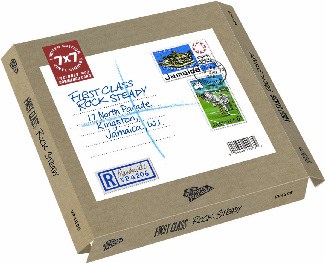Filmmakers travel to uncover steelpan communities in six countries
Los Angeles – “The time has come and we are ready to make this happen,” says British award-winning director Keith Musaman Morton, as he raises a picture of a rusted steelpan. “Who would believe that [the steelpan] has come to symbolize so much?”
Morton is one month away from beginning the second round of production for his documentary Panomundo, a documentary about the history of the steelpan (also know as the steel drum) and its influence around the world. Along with award-winning American director/producer Charysse Tia Harper, he is hosting a fundraising campaign on Seed&Spark, a film-only crowdfunding site, to travel to six countries to film how the steelpan is used in a variety of cultures.
“What we have realized is the pan is not only used as a musical instrument, but it is used to instil discipline and evoke a sense of freedom,” says Harper.
The steelpan was developed in the 1930s as a form of musical expression to coincide with the Carnival activities. With the colonial government (United Kingdom) imposing a no drum-beating ban and bamboo not giving the desired effect, poor communities turned to metal containers, also called pans. The men who would “beat” notes into these containers came to be known as panmen. Notwithstanding the oppression that was imposed by the authorities, the craft was developed even more in the 1940s and led to widespread popularity. In 1951, the Trinidad All-Steel Percussion Orchestra (TASPO) travelled to the United Kingdom, which began the international voyage of the steelpan.
Watch a preview of Panomundo on South Florida Caribbean News:
http://www.sflcn.com/multimedia.php?id=C5mSixbyRMA
“It has also been a journey for us,” reflects Morton. “We had this concept at the end of 2011 and it has now transformed into a reality.”
The duo travelled to Trinidad & Tobago for three months in 2012 where they interviewed steelband members, historians, and government officials to learn more about the history of the steelpan. Additionally, filming took place in London and in Illinois, USA. The crew has been able to interview pan legends and figure heads, such as Ellie Mannette, the man who created a concave playing surface for the steelpan; Sterling Betancourt, a member of TASPO who introduced the instrument in London and Zurich, Switzerland; Cliff Alexis, a member of the National Steelband of Trinidad & Tobago that played with American performer Liberace; and Ray Holman, international pannist, composer and arranger.
“People have been inspired by this instrument to help others stay out of trouble, gain a sense of self-fulfilment and show off their musical skills,” explains Harper. “We have the opportunity to share their stories and let the world know how important the pan is.”
The crew – made up of Caribbeans, Europeans, Africans and North Americans – will travel to the United States, United Kingdom, Canada, Nigeria, Japan, and Switzerland over the next six months.





